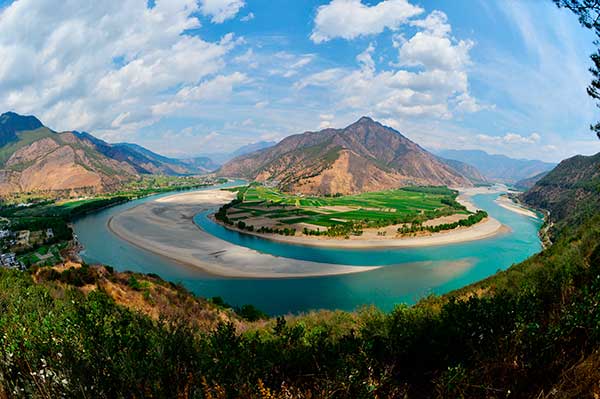Tourism authorities to promote integration
 |
|
[Photo provided to China Daily] |
Experts have called for closer cooperation between the nine provinces and two municipalities along the route of the proposed Yangtze River economic belt to realize the goal of building an international tourism area along the river, in line with proposals presented more than a year ago.
In October 2015, the heads of the tourism departments of the provinces of Jiangsu, Zhejiang, Anhui, Jiangxi, Hubei, Hunan, Sichuan, Yunnan and Guizhou, and the municipalities of Shanghai and Chongqing, convened in Shanghai to sign a declaration of cooperation to integrate their travel resources and develop tourism along the river into a global brand.
Regular meetings and mechanisms for discussions must be established to tackle one of the primary difficulties in realizing that goal - setting a consistent standard for tourism services in the different regions along the economic belt.
"Some ideas for the tourism belt involve traveling along the river by high-speed railway, cruise liners and self-driving tours. But so much work needs to be done before these dreams can come true," said Wang Huimin, a researcher at the institute of applied economics at the Shanghai Academy of Social Sciences.
According to Wang, the imbalanced economic development across the 11 provinces and municipalities is a fundamental bottleneck to reaching a consistent level of tourist services.
"For example, if we launch a cruise liner tour from Shanghai to Chongqing and establish several stops along the route, which may be Nanjing in Jiangsu, and Lushan in Jiangxi, the passengers must receive services of equal or similar quality at both stops, and the infrastructure at the ports should be of the same standard," Wang said.
The project is likely to be arduous, time-consuming and closer cooperation will also be required to prevent close-range duplication of similar projects throughout the economic belt, she explained, adding that a large number of ancient towns lie along the proposed route and many of them are now formulating plans to attract tourists, so simply copying the attractions in another town will never lead to success.
Wuzhen, in Zhejiang, provides another example of urban development in recent years. The scenic town has been transformed from the country's largest knitwear center into an international venue that has twice hosted the World Internet Conference and has held the Wuzhen Theater Festival four times.
"Professionals and amateurs gather in the town for the plays, and the exhibition sector is becoming a booming industry in this small place," Wang said.
Yuhuang Shannan, also in Zhejiang, provides an excellent example of differentiation. The town, known for its stunning natural scenery, has attracted nearly 1,000 financial institutions and is aiming to become a hub for hedge funds.
"It will become a huge platform for private capital in Zhejiang and a powerful driving force in the transformation and upgrading of the province," said Zhou Ying, a publicity officer for the town.














